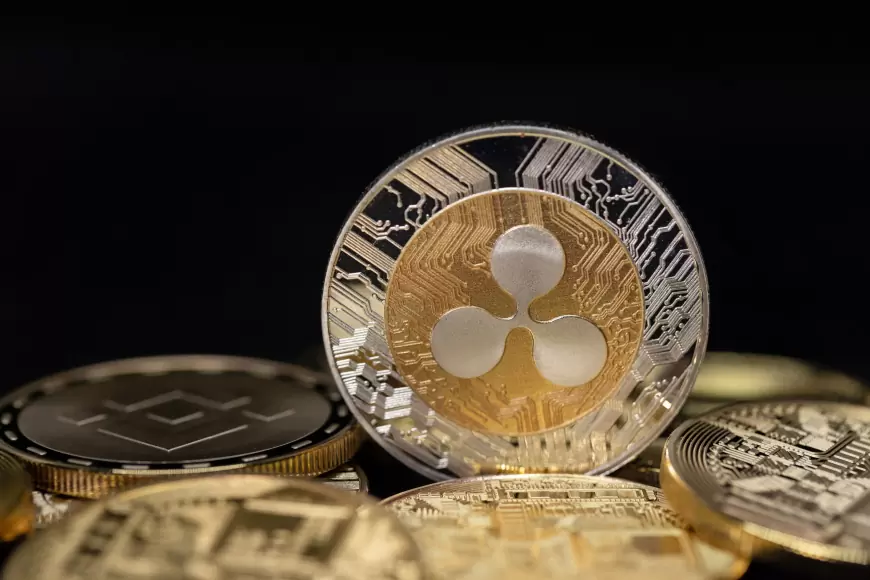Revolutionizing Global Payments: The Potential of Ripple and Its XRP Ledger Technology
Learn about Ripple's potential use cases, including cross-border payments and micropayments. Find answers to frequently asked questions and consider the role of XRP in the Ripple network. Discover the various uses for Ripple's fast and cost-effective payment system, from international transactions to microtransactions.

Ripple is a cryptocurrency that has seen a significant rise in popularity and value in recent years. It was created by Ripple Labs Inc., a technology company founded in 2012, and is now one of the top five cryptocurrencies in terms of market capitalization.
In this article, we will dive into the world of Ripple (XRP), exploring its history, technology, and potential use cases. We will also answer some frequently asked questions about this digital asset.
Table of Contents |
Introduction to Ripple
Ripple is a real-time gross settlement system (RTGS), currency exchange, and remittance network that operates on a decentralized, open-source protocol. It uses a digital asset called XRP to facilitate cross-border transactions, making it a faster and more cost-effective alternative to traditional methods.
The goal of Ripple is to create a seamless global payment network that can facilitate instant cross-border transactions at low costs. With traditional banking systems, international payments can take days to complete and involve high transaction fees. Ripple aims to change this by providing a faster and cheaper solution for global payments.
History of Ripple
Ripple was founded in 2012 by Chris Larsen and Jed McCaleb, who wanted to create a faster and more efficient payment network. Initially, the company was known as OpenCoin before rebranding to Ripple Labs Inc. in 2015.
In its early years, Ripple focused on developing technology for banks and other financial institutions. It wasn't until 2018 that Ripple began to focus on the retail market and gained significant popularity among individual investors.
Technology behind Ripple
The technology behind Ripple is what sets it apart from other cryptocurrencies. It uses a distributed ledger called the XRP Ledger, which is maintained by a network of independent servers that validate transactions in real-time.
One of the key features of Ripple's technology is its consensus algorithm, which allows for fast and secure transactions. Unlike other cryptocurrencies that rely on mining, XRP tokens were pre-mined before the network launched.
Potential Use Cases for Ripple
Ripple's potential use cases are vast, thanks to its fast and cost-effective payment system. Its target audience is primarily financial institutions, but it also has benefits for individual users and businesses.
One of the most significant use cases for Ripple is its ability to facilitate cross-border payments. With traditional methods, sending money internationally involves multiple intermediaries and can take days to complete. With Ripple, these transactions can be completed in seconds with lower fees.
Additionally, Ripple's technology can also be used for micropayments, such as paying for digital content or services. Its fast transaction speed and low fees make it an attractive option for this type of use case.
Frequently Asked Questions
How does Ripple differ from additional cryptocurrencies?
While most cryptocurrencies aim to be a decentralized alternative to traditional financial systems, Ripple works closely with banks and other financial institutions. It also uses a different technology called the XRP Ledger, which sets it apart from other cryptocurrencies.
How is Ripple different from Bitcoin?
Bitcoin and Ripple have different goals and use cases. While Bitcoin aims to be a decentralized digital currency, Ripple focuses on providing fast and cost-effective solutions for cross-border payments. Additionally, while Bitcoin's technology relies on mining, Ripple does not.
What function does XRP serve on the Ripple network?
XRP plays a vital role in the Ripple network. It is used as a bridge currency for cross-border transactions, allowing for faster and more efficient conversion of fiat currencies into XRP and vice versa. Additionally, XRP is also used to facilitate micropayments within the Ripple network.
Is Ripple a good investment?
As with any investment, it is essential to do your own research and understand the risks involved before investing in Ripple. While its technology has potential, it is still a relatively new asset, and its value can be volatile.
How does Ripple ensure security and trust?
Ripple's technology uses a consensus algorithm that ensures transactions are validated quickly and securely. Additionally, its partnerships with reputable banks and financial institutions also help to build trust in the network. Overall, Ripple's technology and partnerships work together to ensure a secure and trustworthy platform for cross-border payments.
While there are still some concerns about its centralization and regulatory challenges, Ripple continues to grow and expand its reach. It has already established itself as a viable solution for international payments, and with further advancements in its technology, it has the potential to revolutionize the global financial system. So, it is definitely worth keeping an eye on Ripple and its developments in the future.
Investors may also want to consider diversifying their portfolios by including a small amount of XRP as part of their investment strategy. However, as with any cryptocurrency, it is important to carefully consider your risk tolerance and do your own research before making any investment decisions. Ultimately, only time will tell if Ripple's technology and partnerships are enough to make it a successful and widely adopted payment network. But one thing is for sure – the role of XRP in the Ripple network will continue to play a significant part in its success.
Conclusion
Ripple has made significant strides in the world of cryptocurrency and global payments. Its technology, partnerships, and potential use cases have garnered attention from both financial institutions and individual investors. While there are still challenges to overcome, Ripple has the potential to revolutionize the way we make international transactions. So whether you're a large bank or an individual looking to send money overseas, Ripple may just be the solution you've been looking for. Keep an eye on this innovative company as it continues to pave the way for a faster and cheaper global payment system. Who knows what advancements and partnerships are in store for Ripple in the future. The possibilities are endless. This could very well be just the beginning of Ripple's journey towards transforming the traditional financial landscape. One thing is for certain – it's definitely one to watch. So, stay tuned for more exciting developments from Ripple in the years to come!
Thank you for reading and we hope this article has provided valuable insights into Ripple and its technology. Happy investing!
What's Your Reaction?





















































